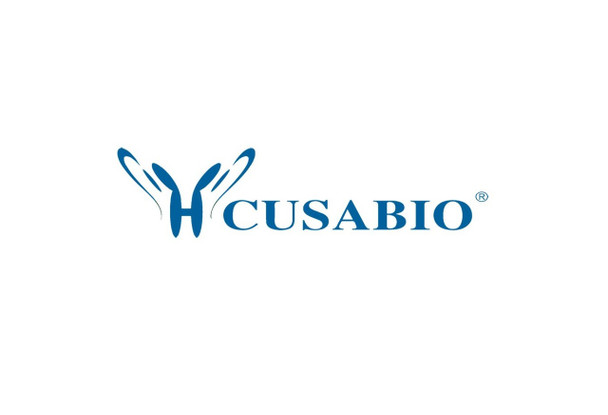Cusabio Vaccinia virus Recombinants
Recombinant Vaccinia virus Protein E3 (E3L) | CSB-EP322729VAA
- SKU:
- CSB-EP322729VAA
- Availability:
- 3 - 7 Working Days
Description
Recombinant Vaccinia virus Protein E3 (E3L) | CSB-EP322729VAA | Cusabio
Alternative Name(s): p25
Gene Names: E3L
Research Areas: Others
Organism: Vaccinia virus (strain Copenhagen) (VACV)
AA Sequence: MSKIYIDERSDAEIVCAAIKNIGIEGATAAQLTRQLNMEKREVNKALYDLQRSAMVYSSDDIPPRWFMTTEADKPDADAMADVIIDDVSREKSMREDHKSFDDVIPAKKIIDWKDANPVTIINEYCQITKRDWSFRIESVGPSNSPTFYACVDIDGRVFDKADGKSKRDAKNNAAKLAVDKLLGYVIIRF
Source: E.coli
Tag Info: N-terminal 10xHis-tagged and C-terminal Myc-tagged
Expression Region: 1-190aa
Sequence Info: Full Length
MW: 28.5 kDa
Purity: Greater than 85% as determined by SDS-PAGE.
Relevance: The C-terminus binds to and sequesters double-stranded RNA (dsRNA) synthesized during viral infection. This binding acts to 'mask' the dsRNA thereby preventing recognition and subsequent activation of EIF2AK2/PKR. The N-terminus is required for phosphorylation regulation of the translation initiation factor EIF2S1, but without affecting cytosolic protein translation. Blocks the phosphorylation and subsequent activation of IRF3 and IRF7 kinases, that are required for interferon-alpha (IFN-alpha) gene expression. Also inhibits NF-kappa-B activation and the ubiquitin-like protein G1P2/ISG15, which is an early antiviral protein
Reference: "IRF3 and IRF7 phosphorylation in virus-infected cells does not require double-stranded RNA-dependent protein kinase R or Ikappa B kinase but is blocked by Vaccinia virus E3L protein." Smith E.J., Marie I.J., Prakash A., Garcia-Sastre A., Levy D.E. J. Biol. Chem. 276:8951-8957(2001)
Storage: The shelf life is related to many factors, storage state, buffer ingredients, storage temperature and the stability of the protein itself. Generally, the shelf life of liquid form is 6 months at -20?/-80?. The shelf life of lyophilized form is 12 months at -20?/-80?.
Notes: Repeated freezing and thawing is not recommended. Store working aliquots at 4? for up to one week.
Function: The C-terminus binds to and sequesters double-stranded RNA (dsRNA) synthesized during viral infection. This binding acts to 'mask' the dsRNA thereby preventing recognition and subsequent activation of EIF2AK2/PKR. The N-terminus is required for phosphorylation regulation of the translation initiation factor EIF2S1, but without affecting cytosolic protein translation. Blocks the phosphorylation and subsequent activation of IRF3 and IRF7 kinases, that are required for interferon-alpha (IFN-alpha) gene expression. Also inhibits NF-kappa-B activation and the ubiquitin-like protein G1P2/ISG15, which is an early antiviral protein (By similarity).
Involvement in disease:
Subcellular Location:
Protein Families: Poxviridae E3 protein family
Tissue Specificity:
Paythway:
Form: Liquid or Lyophilized powder
Buffer: If the delivery form is liquid, the default storage buffer is Tris/PBS-based buffer, 5%-50% glycerol. If the delivery form is lyophilized powder, the buffer before lyophilization is Tris/PBS-based buffer, 6% Trehalose, pH 8.0.
Reconstitution: We recommend that this vial be briefly centrifuged prior to opening to bring the contents to the bottom. Please reconstitute protein in deionized sterile water to a concentration of 0.1-1.0 mg/mL.We recommend to add 5-50% of glycerol (final concentration) and aliquot for long-term storage at -20?/-80?. Our default final concentration of glycerol is 50%. Customers could use it as reference.
Uniprot ID: P21081
HGNC Database Link: N/A
UniGene Database Link: N/A
KEGG Database Link: N/A
STRING Database Link: N/A
OMIM Database Link: N/A









